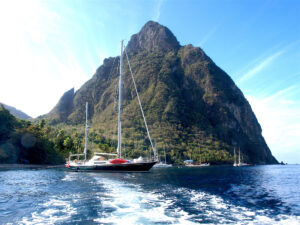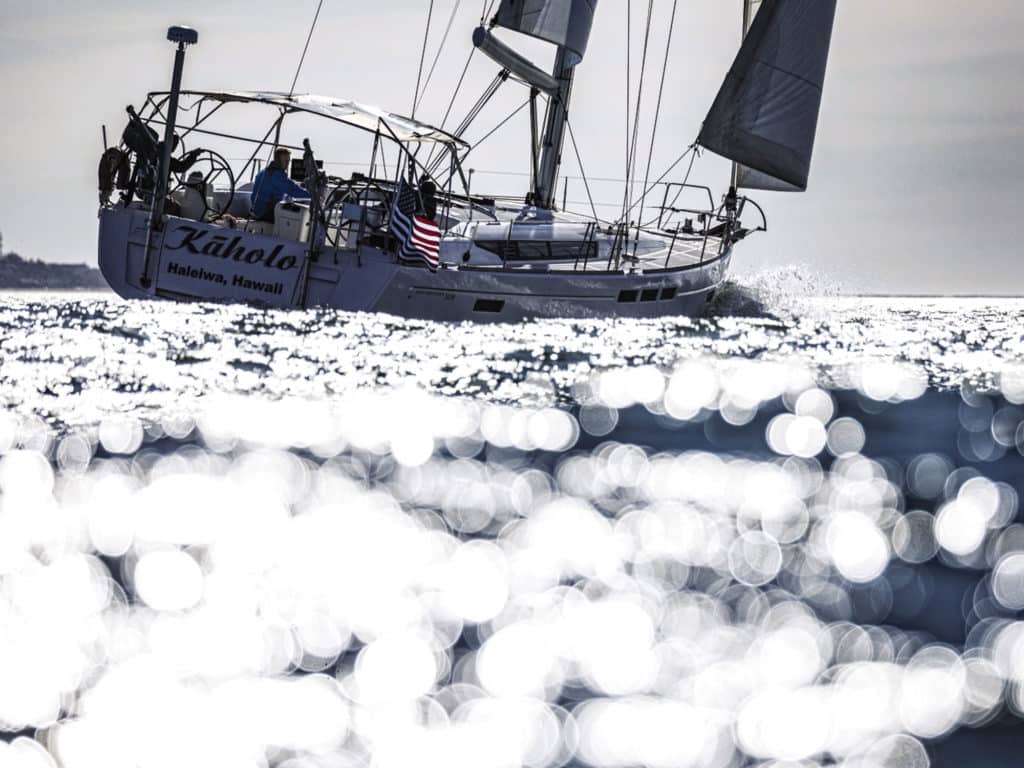
No one likes to be told their plan won’t work. I’ll admit that mine was far-fetched: I couldn’t find a good boat here on the US West Coast in 2020, so I decided to buy one in Europe, sail it across the Atlantic and Caribbean, and then ship it to the Pacific Northwest. Only 5,000 miles at sea. On a boat I hadn’t seen. During the height of the pandemic lockdowns.
A close friend said, simply, “That’s not going to happen.”
I found the boat online, so the internet is at least partially to blame. Yes, I neglected to filter the search results for “West Coast boats only.” The reasonably priced, barely used 2012 Jeanneau Sun Odyssey 509 caught my eye, lying lonely in a Spanish marina in Gibraltar Bay.
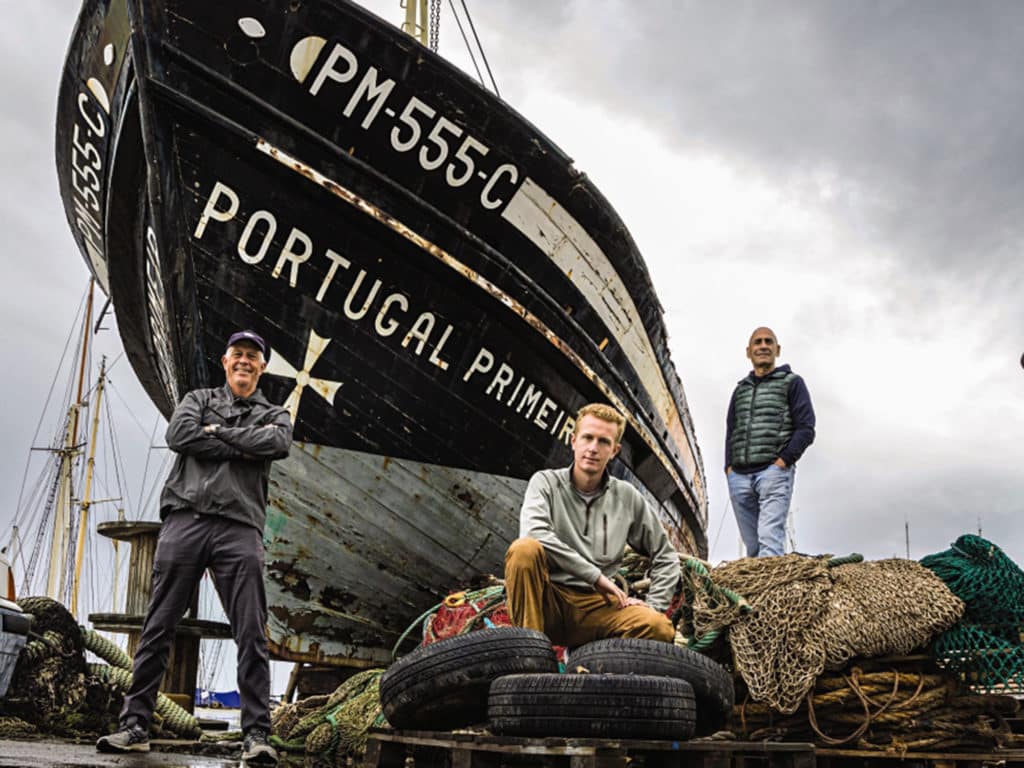
I can also blame my wanderlust on the pandemic isolation. I yearned for a long ocean voyage—any adventure over the horizon. And, I’d done this before: My wife, Kyoko, and I had bought Keala, a Jeanneau Sun Odyssey 44i, in France, sailed it across the Atlantic and Caribbean, and shipped it from Panama up to Vancouver. It was nearly all downwind. It would be easy to do it again. Of course, that was three years ago, when the world was open to visitors….
Perhaps we’d been a bit hasty to list Keala for sale in Seattle during the pandemic. It was snapped right up in the booming seller’s market. We wanted a family boat that was a bit larger, with a bit more space, and with gentle inclines for my father, now 96 years old. He’d taken our family cruising all over the world; it was now my turn to take my dad sailing. And a boat does make a great place to isolate, while cruising in calm and pristine areas like the San Juan Islands.
But for that, we needed a new boat. I contacted the sellers, learned how the boat had been used (not much), decided it was our boat, and made an offer.
Then, things got complicated: Spain flat-out refused entry to my crew: myself, my nephew Rowan Ruddle, 20, and longtime friend and ocean veteran Jeff Max, 62. We tried to change tack and get into the nearby English port of Gibraltar, but it had had a COVID spike and closed too.
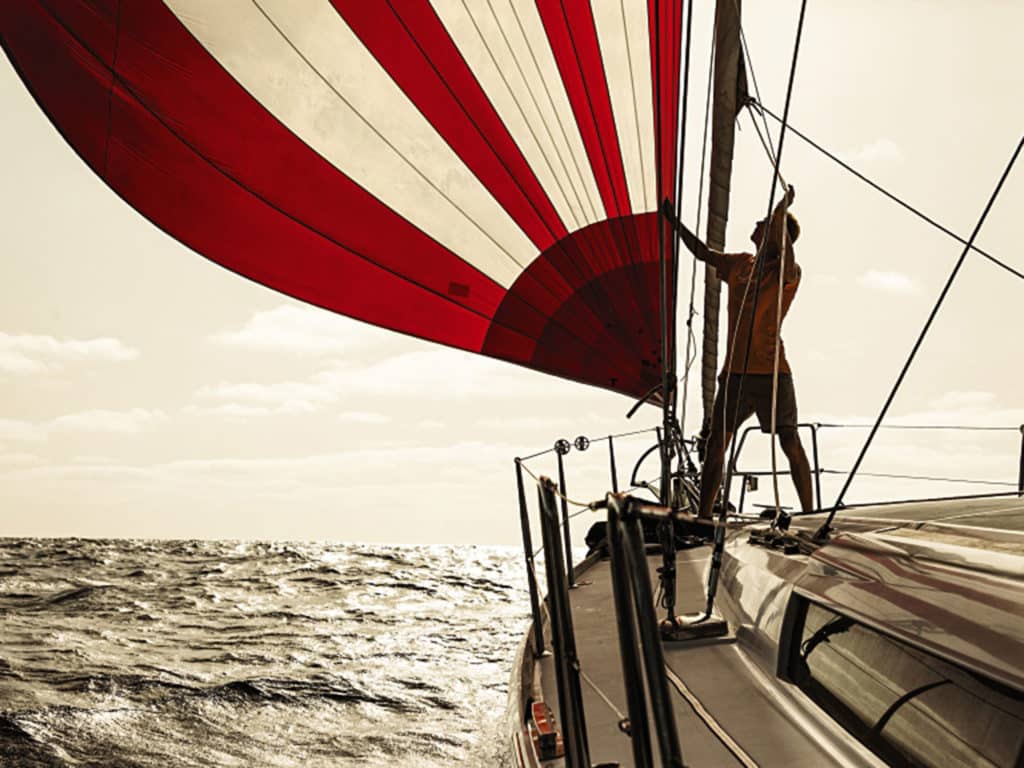
My father, the most intrepid of adventurers, even began to voice his doubts. Sure we’d be tested, and we’d be isolated on the boat for much of the time, but there was still risk. Maybe this really wasn’t going to happen. I called Jeff, who is a hard-charging exec at of a number of tech and aerospace firms. “No way,” he said. “We are doing this!”
So we came up with a slightly outrageous plan: We would have the boat delivered to Portugal, and then enter Portugal as a professional delivery crew, on essential business. Deliveries are actually a side business of mine, when I am not working as a photographer, so it wasn’t too far from the truth. Using every contact we had, we secured a letter of engagement and even managed to get official letters stating our essential purpose. Fully armed with documents and having been tested for COVID, we all caught different flights and met in Denver during a massive February snowstorm.
Outside the glass-walled airport, everything was white. While checking in for our trans-Atlantic flight to Faro, Portugal, via Frankfurt, Germany, I watched people ahead of us in line being turned away because of expired test results or minor paperwork inconsistencies. There was much hand-wringing, crying and shouting. One man pointed at the blizzard outside, yelling, and threw his hands up.
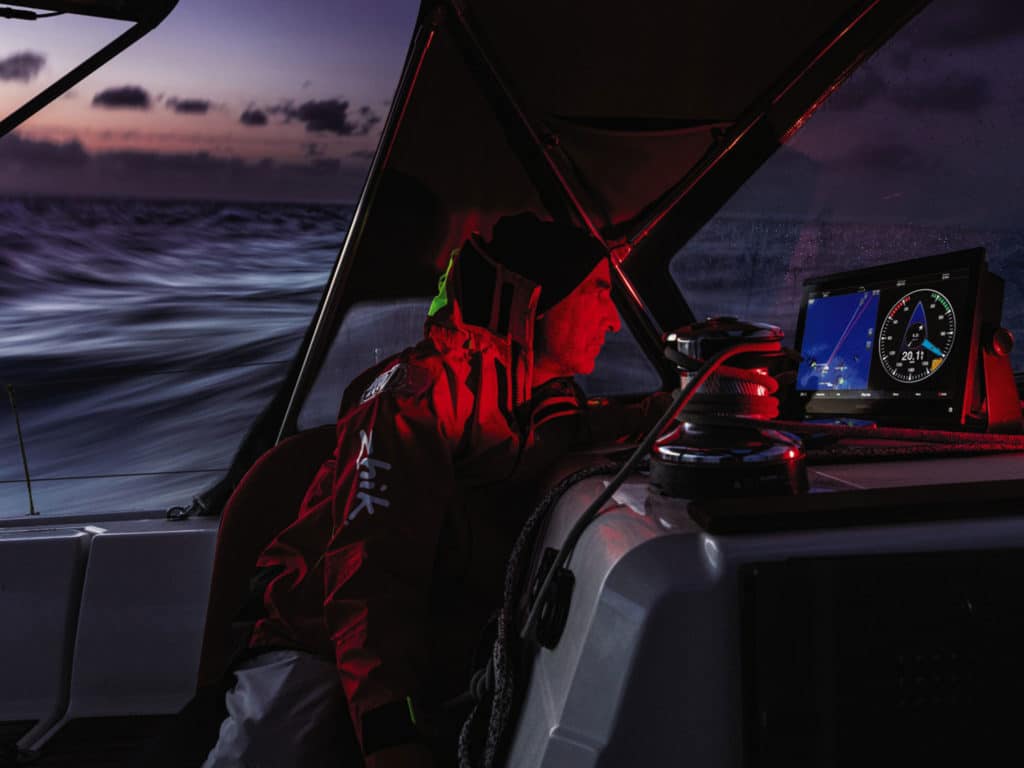
I was tense, but when our turn came, we were miraculously ushered aboard. Of course, we still had no idea if we would be allowed into Europe. When we landed in Frankfurt, we learned that we would need to clear immigration then and there, and were directed to an immigration officer for the Schengen Area, a free-travel zone that includes Portugal. This was a moment I’d really been dreading, but the German immigration officer opened my folder, leafed through the thick sheaf of supporting documents, and said one word: “Pah-fect!”
We still had to get into Portugal, and we hadn’t even seen the boat, but things were looking good. We boarded our next flight feeling hopeful.
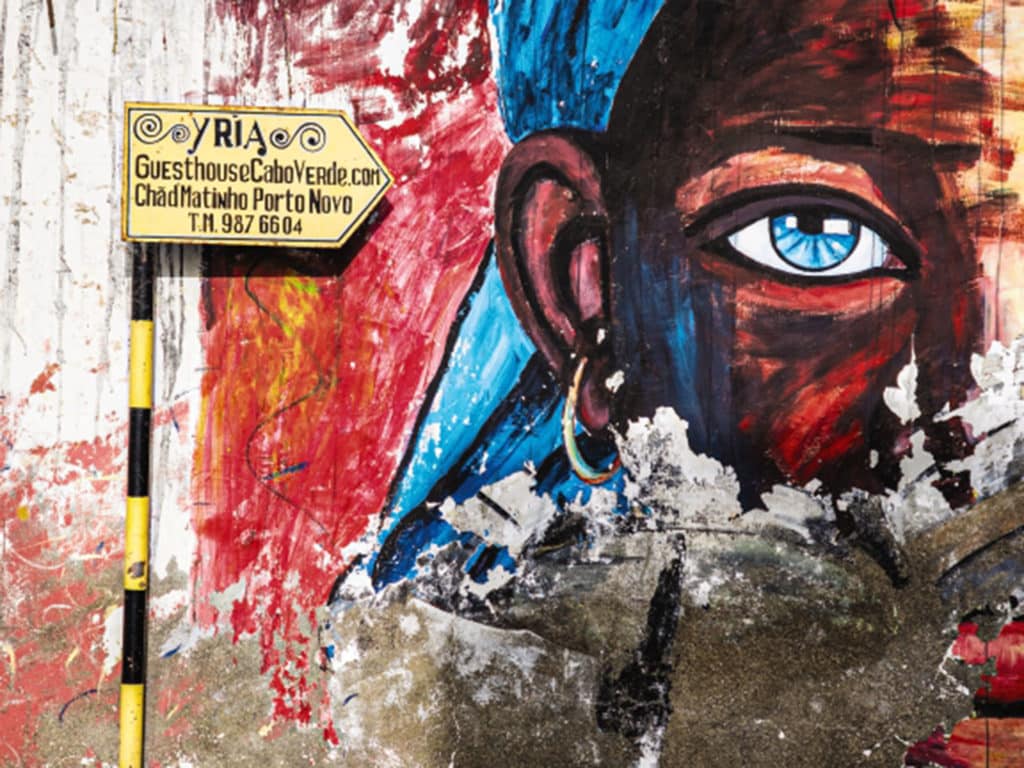
In Portugal, the border officer actually knew who we were. “You are the crew of the yacht,” he said. Having called and emailed numerous times in the prior weeks, I shouldn’t have been surprised.
Then, just like that, months of planning and worry were over. I imagined the hardest part of the whole trip to be over.
A quick taxi ride to Vilamoura revealed the new boat. Yes, the hullsides were blackened from the rubber docksides in the Gibraltar marina. Yes, the boat was a mess. But closer inspection revealed that the sails were in great condition, and there really had been little use. Maybe with some polish and a bit of work, this boat would come out fine.
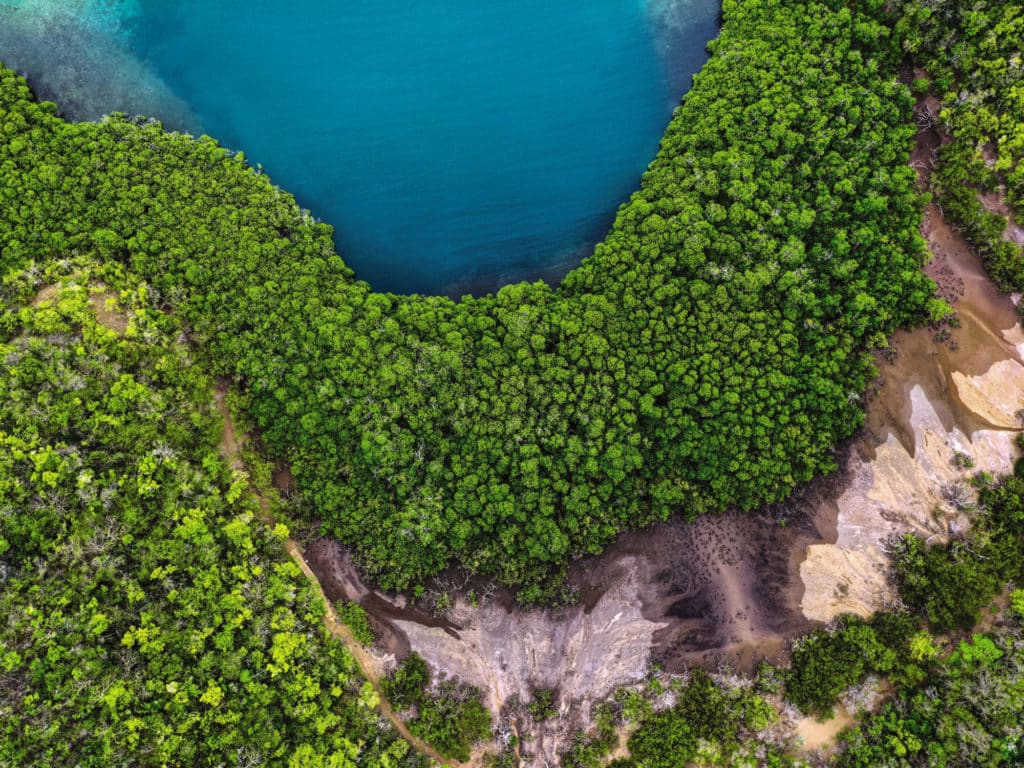
The gear inventory was a bonanza, since the previous owner had planned a circumnavigation: an offshore life raft, a spinnaker, an impressive array of solar panels, a new dinghy with davits, two new outboard motors, spares for everything, even survival suits. We hired a surveyor, hauled the boat, and had the rig checked by the local rigger, Pete Keeping. The hull passed inspection, but the rig didn’t. I went up the mast myself and found corrosion on the swage fittings. At only nine years old, the rig was condemned. Keeping recommended replacing all standing rigging. The boat had spent years in Madeira, where the hardstand area is under cover of an airport runway. I thought being under cover would be good for the boat, but I was wrong. The lack of rainwater meant the sea salt coming in from the North Atlantic storms would accumulate. Jet fuel, it turns out, is also highly corrosive.
Replacing the rig turned out to be a long process due to the lack of available parts during the pandemic, but after a month of making a nuisance of myself in the yard, Keeping finally got our rig back up. He came out with us to tune the rig several times, meticulous to the last detail. He was pleased to give us a section of his old mast to repurpose as a mount for our satellite antenna.
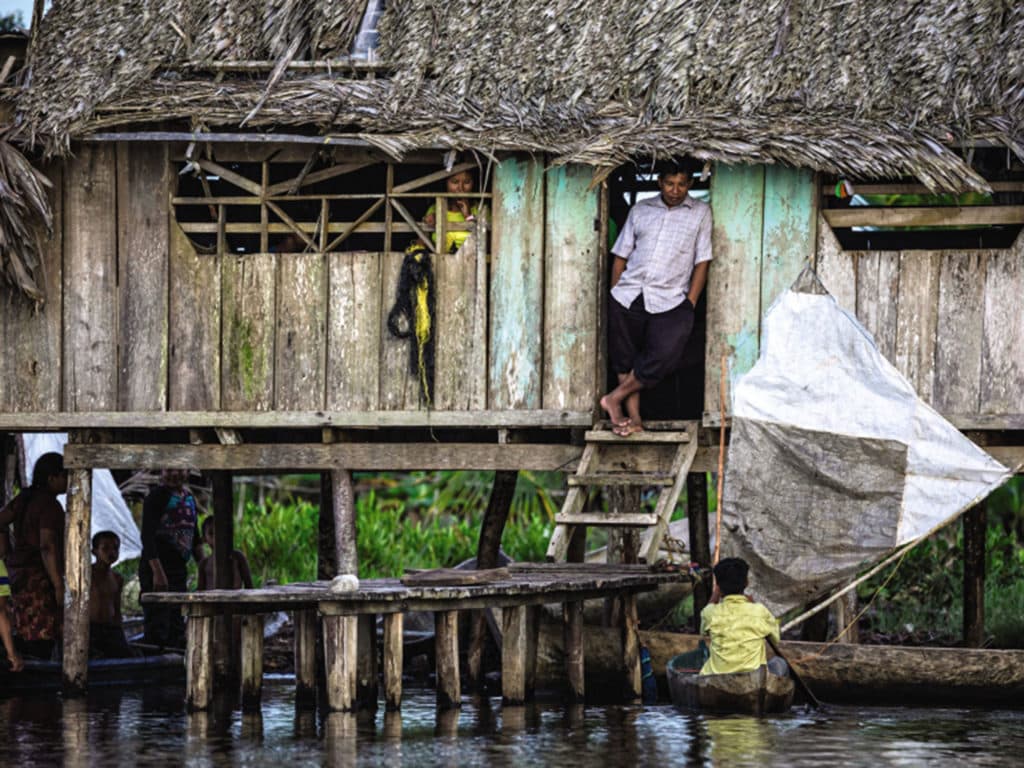
Having bought boats in Europe in the past, I came prepared: Along with a few important spares and parts, I had brought the name and hailing port, “Haleiwa, Hawaii,” pre-printed on a vinyl sticker for us by BoatUS. Christening was a simple matter of removing the old name and applying the new one.
I christened the boat Kāholo, which means “to move nimbly and quickly” in Hawaiian, and is the name of an achingly graceful hula move. (I’d originally suggested the name Hula to my wife, who dances hula, and she thought it was “too grass skirt and coconut bra.”)
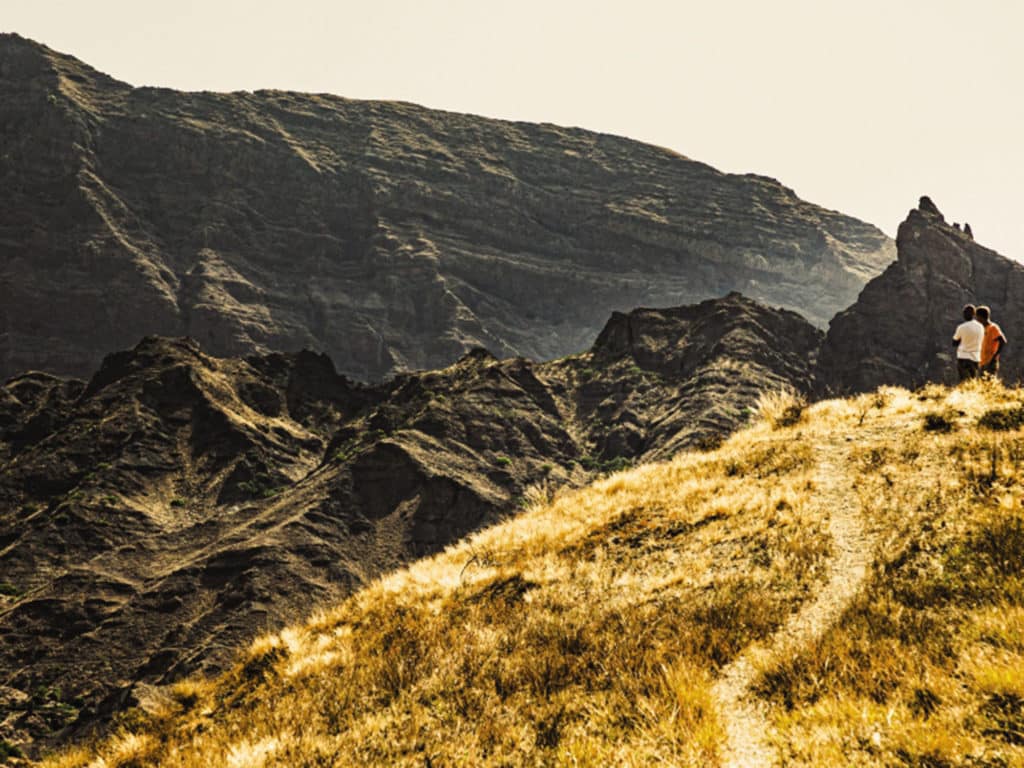
We replaced the fixed prop with a new Gori folding prop, and then bought massive amounts of cheap, delicious Portuguese food, beer and local wine. We stowed everything and made ready for a major ocean crossing.
Our plan was to bypass the Canary Islands and sail directly for Cabo Verde, which lies just on the southern edge of the trade-wind route across the Atlantic. From there, we’d depart on our trans-Atlantic crossing to St. Vincent and the Grenadines in the Caribbean, and then direct to Panama. Fewer stops, I reasoned, meant less bureaucracy, clearing in, quarantines and COVID tests.
Normally, on a new boat, I’d cruise the coast as much as possible to test all the systems, but with the Portuguese and Spanish coasts on lockdown, that was out of the question. The ocean crossing to the Cabo Verde islands would have to be our shakedown sail.
It was a momentous occasion to finally cast off the lines and run free. But just as we made our offing from Vilamoura, the Portuguese coast guard stopped us in a military RIB, demanded that we shut down our engine, and insisted on seeing a permit to sail. Luckily, I’d thought of that, and had just received clearance via email on my cellphone. The officer wished us a fun sail and handed back the phone. We were on our way.
We were on the lookout for orcas, which have become a real threat to sailboats in the area, attacking and disabling their rudders on a regular basis. But aside from worrying about them, there aren’t really many precautions to take, other than leaving the coast behind as quickly as possible. So we concentrated on sailing fast.
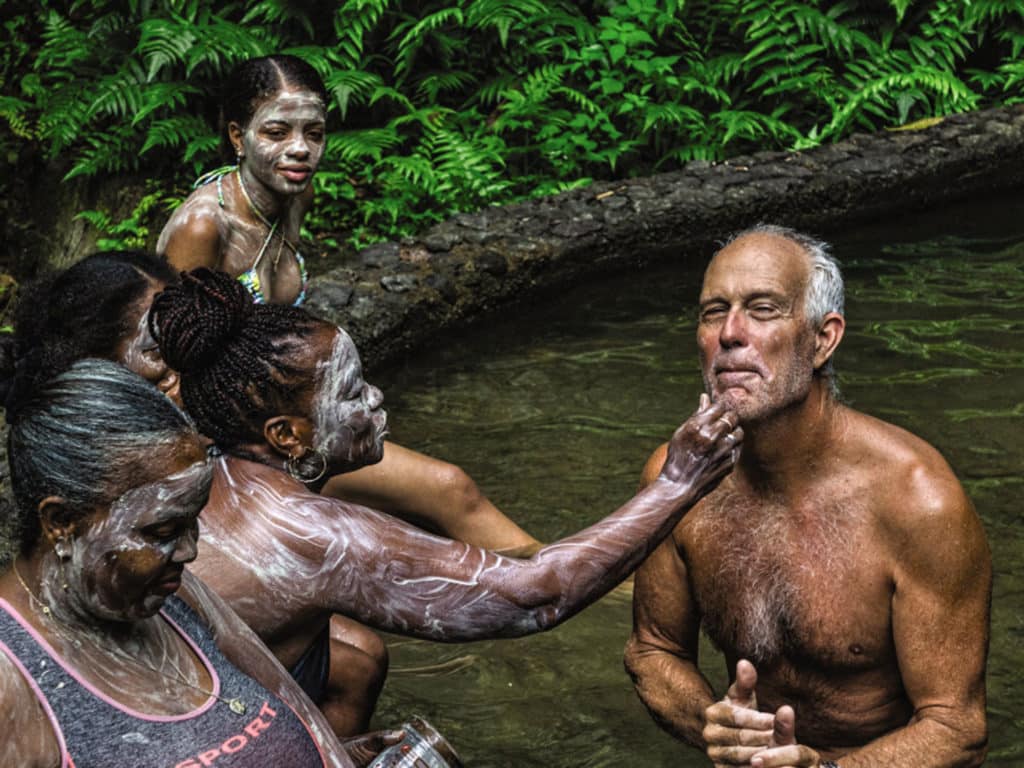
The boat seemed ready for the voyage. The 50-foot Philippe Briand-designed hull was quite comfortable at 8 to 9 knots as we reached down south through the volcanic peaks of the Canary Islands without stopping, then farther south to the Cabo Verde islands. We dealt with the inevitable issues such as halyard chafe, and losing and then somehow retrieving our spinnaker in the water. The bigger issue was losing most of our electronics, including the autopilot, as we approached Cabo Verde. These being absolutely crucial to our onward voyage across the Atlantic, we had to abandon our dreams of leisurely cruising the islands. The refrain from the crew was, “That’s not going to happen.” We used iPads and backup chart plotters to navigate directly for the marina at Mindelo, the main port.
Our first landfall was an emotional moment for me, considering how much work we’d put into getting there. The sight of the jagged peaks of São Nicolau to starboard promised new adventures. Under full sail in northeast trades of only 15 knots entering the channel between São Nicolau and São Vicente, we were hoping for a little acceleration to push us on the home stretch—but not the 40 knots we got. I live in Hawaii, where the channels can be fearsome, but I was caught off-guard by this.
We entered the channel with too much sail. The sea became short and steep, and the boat started surfing. A wave grabbed our stern, and we broached into the wind. We reefed the jib, then the main, to bring her under control. Then we reefed again. Finally down to just a third of our main and half the jib, we caught a steep wave and surfed into the channel, clocking more than 17 knots.
The boat performed flawlessly and, at 17 knots, was easy to steer. Gusts coming down from the hills picked up water from the surface in williwaws of white spray. When we got to the marina, we found it was almost as windy. Approaching the dock from downwind, just getting dock lines across before being blown away from the dock was a challenge. We later learned the sailors’ nickname for Mindelo: “Windelo.”
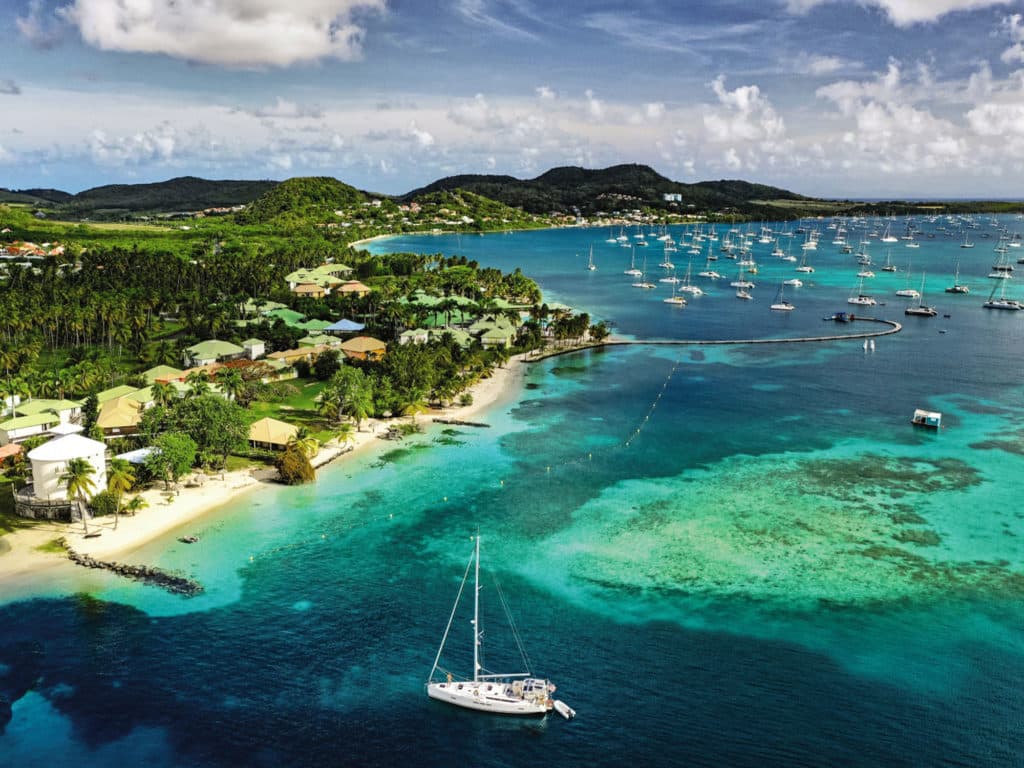
Mindelo is nearly devoid of trees. It’s a harsh place where making a living is far from given, and beggars roam the streets. However, it is home to local marina developer Kai Brossman’s company, BoatCV, and a confident Raymarine tech named Gilson Maocha, who showed up with a business card that reads, “If it’s made by man, we can fix it.” Years ago, Brossman hired Maocha as a local kid who showed a particular proficiency with electronics. Brossman sent him to Raymarine’s training facility in England, where he soaked up the knowledge, having already fixed many sailboats’ electronics with limited resources or parts. On an island with crushing poverty and few jobs, Maocha is so busy that he needs a team of locals to back him up.
We spent most of our time at the marina, working on the boat and pestering Maocha to put us at the top of his long client list, but we were able to make a weekend ferry trip across the howling channel to São Nicolau and its world-class scenery. We were deeply impressed by centuries-old terracing, where the locals have carved out a living on nearly vertical hillsides. There is little rain here, only a few hundred miles from the African desert. Despite a vibrant culture, warm and friendly people, and absolute musical genius, I felt an inescapable parched sadness sink into me. It wasn’t until we reached the Caribbean and drank in the lush green of the tropical rainforests that I realized how deeply the desolation of Cabo Verde had affected me.
True to their word, Maocha and crew did repair the boat, replacing some shorted-out cables and a faulty GPS unit. They were so capable that I had them install a radar and fix some other issues with the boat as well. All that remained was to load fresh vegetables and fruits, and we were ready to head out.
The Atlantic crossing proved long and relatively slow. Although always behind us, the trade winds remained fairly light, and so easterly as to be a dead run for much of the trip. Slatting sails became a slow torture. The resulting chafe and wear on the rig and sails were serious concerns. We always tried to keep the sails full with an angle to the wind, but this meant sailing much greater distances to make progress directly downwind. We set a large, asymmetrical cruising spinnaker during the day but took it down during the night. A midnight wind shift would mean a spinnaker wrapped around our forestay. With only three crew, it wasn’t worth the risk or loss of sleep.
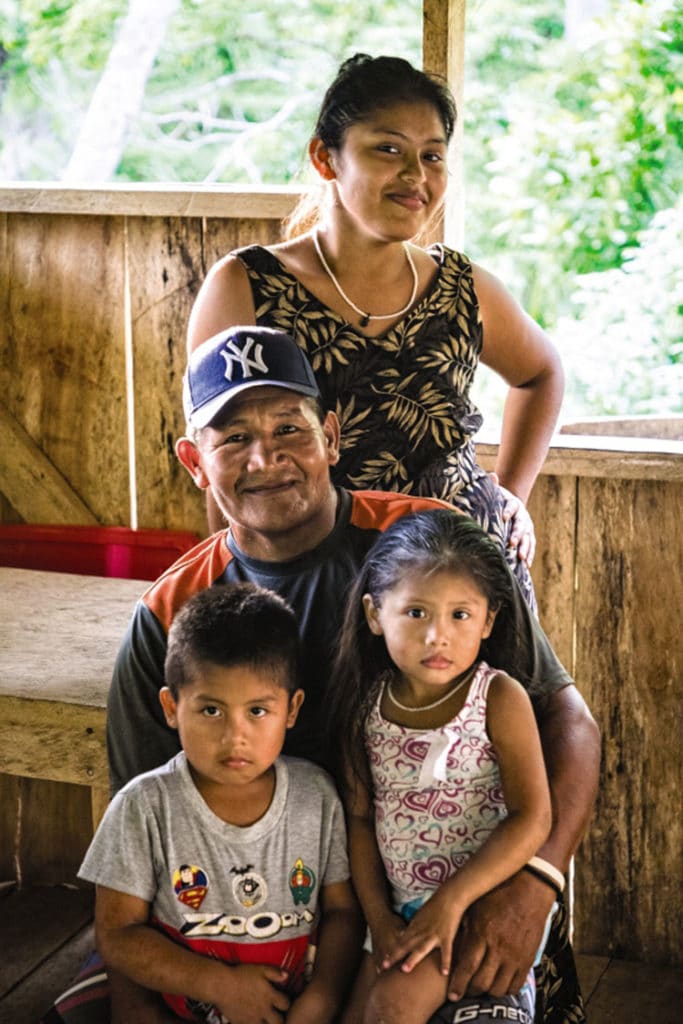
During a long downwind crossing, everyone battles chafe, and we were no different. Our spinnaker halyard chafed through and sent the sail down into the water. And since it was an internal halyard, led inside the mast, there was no way to relead it. We decided to run it externally, which meant going up the mast at sea and running it through a block at the top of the mast. This is a dangerous thing to do because of the exaggerated motion of the boat at the top of the mast 60 feet in the air. The mast seems to do its utmost to fling you off, or worse, crash you back into the mast hard and then fling you off. Thankfully, we had settled conditions, and I was able to go aloft. I could see the concern in the eyes of my crew. I wondered how much of that concern was for me and how much was due to self-preservation.
Unfortunately, when I reached the mast head, I found that our Facnor furling forestay had separated as well, leaving our jib unattached near the head, impossible to furl. The set screws holding the aluminum extrusions together had vibrated loose and disappeared into the void. I had to scavenge screws from the lower sections, and drill and tap the lower sections for screws that I had on board. This meant clinging to the forestay rather than the much more substantial and easier to grasp mast. I’ll admit to equal parts fear and thrill at the challenge of clinging to the forestay in offshore sailing conditions while screwing small set screws. It’s not something many sailors enjoy.
Not far into our crossing of the Atlantic, we encountered clumps of sargassum, which became thicker the farther west we traveled. Sargassum has become a major problem in the tropical Atlantic, caused by runoff and global warming. Fishing became nearly impossible because the lures constantly fouled. Our saildrive, which has a more vertical leg than a shaft drive, became heavily fouled, to the point that the prop and water intake constantly clogged. We would notice a strong vibration from the unbalanced prop, at which point we’d have to take the engine out of gear, stop the boat, and reverse at high rpm until it cleared. Motoring was miserable, and sleep was impossible.
Then, as we approached the Caribbean, the engine began to fail. The problem was sediment, which got worse as the fuel level dropped. No amount of changing our fuel filters worked. We had the dreaded diesel bug, and the tanks on the boat had been properly stirred up for the first time during the crossing. I had added biocide to our fuel before we left Portugal, which killed the offending microbes but left a sludge at the bottom of the tank. The engine refused to run at much more than idle speed. Changing the fuel filters had only a temporary effect. Thankfully, we had solar power to charge our essential gear.
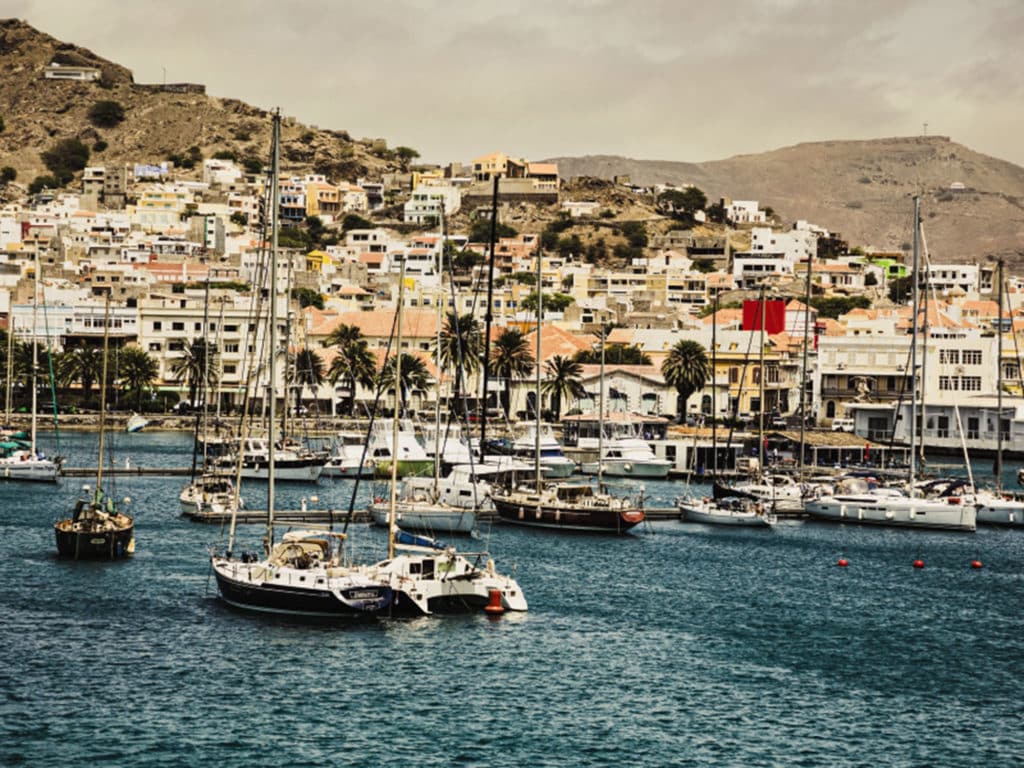
We had chosen St. Vincent as our landfall because, during the pandemic, it was still welcoming offshore sailors with a reasonable onboard-quarantine requirement in a pleasant anchorage. Unfortunately, we learned via satellite communications that the island’s volcano had erupted while we were en route. Thousands of residents fled using cruise ships. The ash reached as far as Barbados, more than 100 miles upwind. With significant areas of the island evacuated, and crops and livelihoods under threat, and considering that we would be needing to reprovision, we decided that landfall there was “not going to happen.”
For us, this turned out to be a blessing in disguise. We found out that we needed a mechanic when the engine died. We asked the authorities on the French island of Martinique for permission to land for the compelling purpose of reprovisioning and repair. Although France and its territories were locked down, our request was granted on the condition that we leave as soon as we had our supplies.
We limped into Martinique, running just barely above idle speed. Martinique is a Caribbean gem and a major yachting center, with all sorts of professionals on hand for things such as cleaning out fuel tanks. It also has markets full of the best French food and wine, at reasonable prices. Once we’d checked in, the locals were glad to see some visitors. They showed us around the waterfalls, volcano, and jungles of their lush and diverse island.
But the voyage wasn’t over. One more crossing awaited, this time the length of the Caribbean from Martinique to Panama. This east-to-west 1,300-mile jump has some challenging conditions, especially off the Colombian coast.
Our transit was free of the big seas and strong winds that plague the area, but we ran into the inevitable thunderstorms and torrential rain in the transition zone where the trades pile into the hot jungle air of Panama. Landing a huge barracuda off the coast of Panama felt as though someone was looking out for us and that this might actually happen.
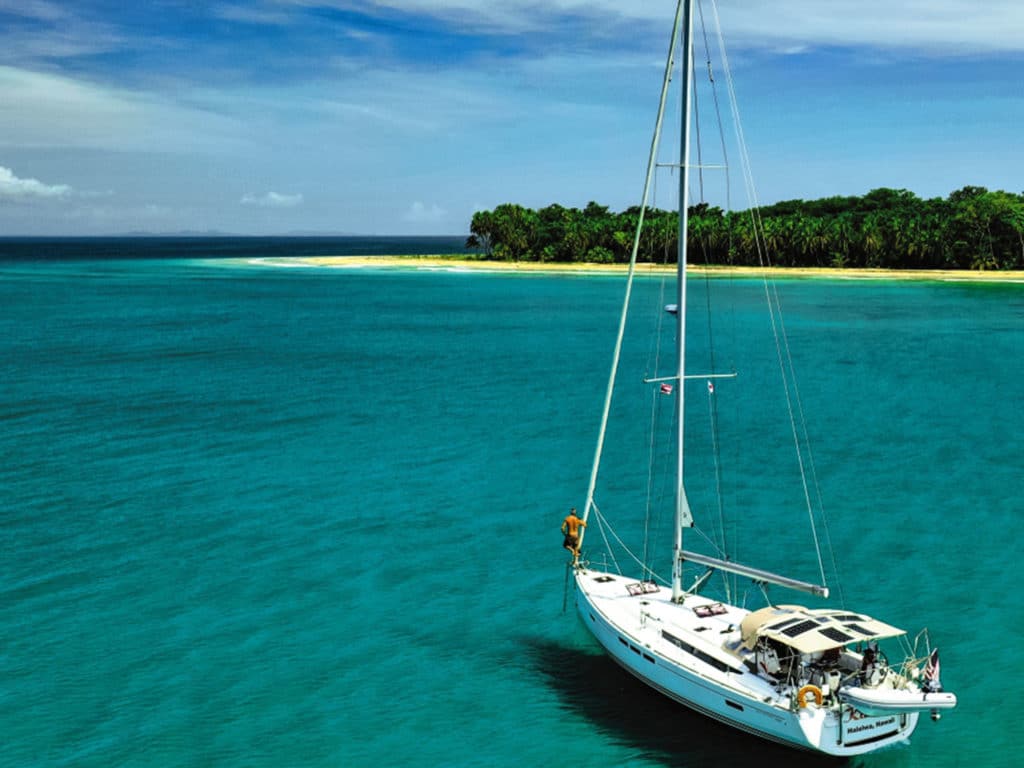
As we neared Panama, Fabian at the Bocas Marina in Panama asked us to send our documents over WhatsApp. From there, they went to the authorities, who basically had us checked in before we even set the anchor. I thought, Yeah, these cellphones are catching on.
Panama’s Caribbean coast soaks up the rain and sun in an exceedingly lush riot of life. There are spectacular beaches, uninhabited islands, mountains, mangroves, jungles, and an inconceivable variety of wildlife, much of it seen nowhere else in the world except this land bridge between the continents. I was struck by the contrast from cool, dry southern Portugal and the barren deserts of the Cabo Verde islands. We had actually traversed an ocean.
In fact, we had completed 5,000 miles of ocean voyaging in 32 days at sea. It was a long shakedown cruise. We had faced issues with electronics, rigging, fuel and steering gear. We’d had slow days and light winds from directly astern. But we had navigated our way around everything as it came, and we had arrived safely.
“Not going to happen?”
It did happen.
Tor Johnson grew up sailing the world with his family of five and a father bitten by wanderlust. A crewmember gave him a camera when he was 10 years old, and he has been chronicling the sailing life ever since. Tor and his wife, Kyoko, run a photography business in Hawaii.

